
Film and Architecture - a film festival on the theme of architecture
For the weekend of October 20 - 22, 2006, Kruh organized a marathon of films related to architecture in collaboration with the Prague cinema Aero. Each visitor could immediately add several more suggestions to the list of 28 screened films where architecture plays a significant role. However, due to time constraints, the list of films had to be reduced, and it was still not possible to watch them all in good health. The selection covered a wide period from silent comedies and Russian avant-garde films from the early 20th century to a documentary about Martin Rajniš that is just a few months old.
Four years ago, Kruh and Aero organized a similar two-day festival entitled Film and Architecture - Swiss Perspectives, which focused exclusively on the architectural production of this alpine country. It was only now that the cycle of portraits of Swiss architects, interspersed throughout this year's festival with quarter-hour medallions, was concluded. Another foreign film block was dedicated to Berlin, which was featured on Saturday afternoon.
Czech films opened and also closed the event. Before the festive Friday opening, a film by Marie Šandová titled Space of Silence about the Trappist monastery in Nový Dvůr was screened. At the end of the first day, just before the screening of the three-hour disaster film featuring 'architect' Paul Newman in the lead role, a well-known Czech architect played a driver with Gabinovsky bravura in Michal Nohejla's graduation film. Sunday noon was dedicated to Prague Castle and two creators who have since passed away. The documentary about Martin Rajniš was included in the program only during the festival and closed it late Sunday evening.
In addition to the film screenings, the event also included an exhibition of photographs by Andrea Lhotáková and a lecture by Vladimír Czumal, both of which took place in the cinema's foyer.
The selection of films (perhaps only with the exception of 'Cucumber') struck me as not overly educational and aimed at entertainment. Playtime and Panelstory were intended by the directors as satire. Fountainhead, originally a romantic film full of pure characters, became a comedy due to the over fifty-year gap from its creation.
We may never see a standalone book from Koolhaas's students about the Nigerian city of Lagos. However, in 2002, a 55-minute documentary about this two-year 'research' was created, which was likely screened for the first time to Czech audiences as part of the festival.
Another documentary by Thom Andersen was packed with immense knowledge and a wealth of information. The three-hour film was essentially just snippets from other movies, all connected by one city - Los Angeles. After watching it, one felt the urge to revisit all those dozens of films mentioned in the documentary and realized that a similar approach could map out the cinematic fate of most world metropolises.
After Sunday lunch, the attendees were grounded by a montage from the classic of Soviet avant-garde Dziga Vertov, accompanied by contemporary music from Cinematic Orchestra. Thus, the remaining films included in the program could also be praised. An interesting aspect could have been the projection of music videos from various bands, featuring some famous buildings. Kruh attempted something similar during the year-long preparations for the festival. Due to long delays and complicated contact searches, they ultimately abandoned this idea. So hopefully, we will see this at the next film screening with Kruh.
Brief program of the festival.
Four years ago, Kruh and Aero organized a similar two-day festival entitled Film and Architecture - Swiss Perspectives, which focused exclusively on the architectural production of this alpine country. It was only now that the cycle of portraits of Swiss architects, interspersed throughout this year's festival with quarter-hour medallions, was concluded. Another foreign film block was dedicated to Berlin, which was featured on Saturday afternoon.
Czech films opened and also closed the event. Before the festive Friday opening, a film by Marie Šandová titled Space of Silence about the Trappist monastery in Nový Dvůr was screened. At the end of the first day, just before the screening of the three-hour disaster film featuring 'architect' Paul Newman in the lead role, a well-known Czech architect played a driver with Gabinovsky bravura in Michal Nohejla's graduation film. Sunday noon was dedicated to Prague Castle and two creators who have since passed away. The documentary about Martin Rajniš was included in the program only during the festival and closed it late Sunday evening.
In addition to the film screenings, the event also included an exhibition of photographs by Andrea Lhotáková and a lecture by Vladimír Czumal, both of which took place in the cinema's foyer.
The selection of films (perhaps only with the exception of 'Cucumber') struck me as not overly educational and aimed at entertainment. Playtime and Panelstory were intended by the directors as satire. Fountainhead, originally a romantic film full of pure characters, became a comedy due to the over fifty-year gap from its creation.
We may never see a standalone book from Koolhaas's students about the Nigerian city of Lagos. However, in 2002, a 55-minute documentary about this two-year 'research' was created, which was likely screened for the first time to Czech audiences as part of the festival.
Another documentary by Thom Andersen was packed with immense knowledge and a wealth of information. The three-hour film was essentially just snippets from other movies, all connected by one city - Los Angeles. After watching it, one felt the urge to revisit all those dozens of films mentioned in the documentary and realized that a similar approach could map out the cinematic fate of most world metropolises.
After Sunday lunch, the attendees were grounded by a montage from the classic of Soviet avant-garde Dziga Vertov, accompanied by contemporary music from Cinematic Orchestra. Thus, the remaining films included in the program could also be praised. An interesting aspect could have been the projection of music videos from various bands, featuring some famous buildings. Kruh attempted something similar during the year-long preparations for the festival. Due to long delays and complicated contact searches, they ultimately abandoned this idea. So hopefully, we will see this at the next film screening with Kruh.
Brief program of the festival.
The English translation is powered by AI tool. Switch to Czech to view the original text source.
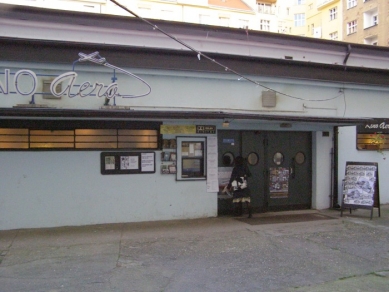
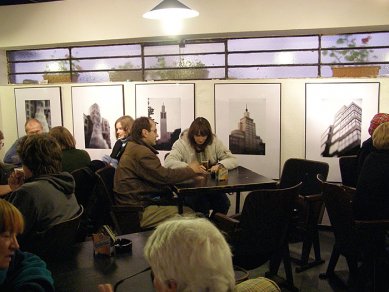
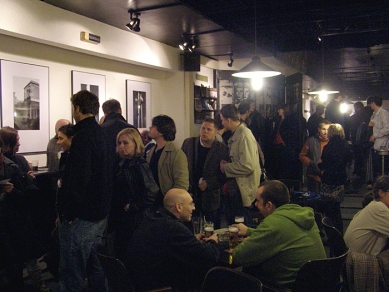
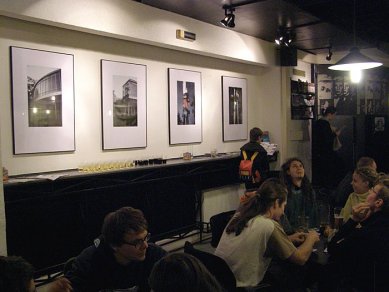
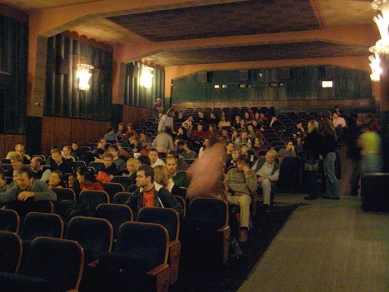

0 comments
add comment
Related articles
0
01.10.2025 | Film and architecture festival will today in Prague open with a documentary about Bauhaus women
0
30.09.2025 | Film and architecture 2025 - Miralles
0
29.09.2025 | Film and Architecture Festival will offer thirty films starting from October 1
0
21.02.2022 | Film and Architecture 2021 - Open Call
0
30.09.2020 | The festival will present 20 films about architecture
0
29.09.2018 | Den architektury 2018 - Film and Architecture
0
20.09.2017 | Den architektury 2017 - Film and architecture
0
18.08.2016 | Den architektury 2016 - Film and architecture










